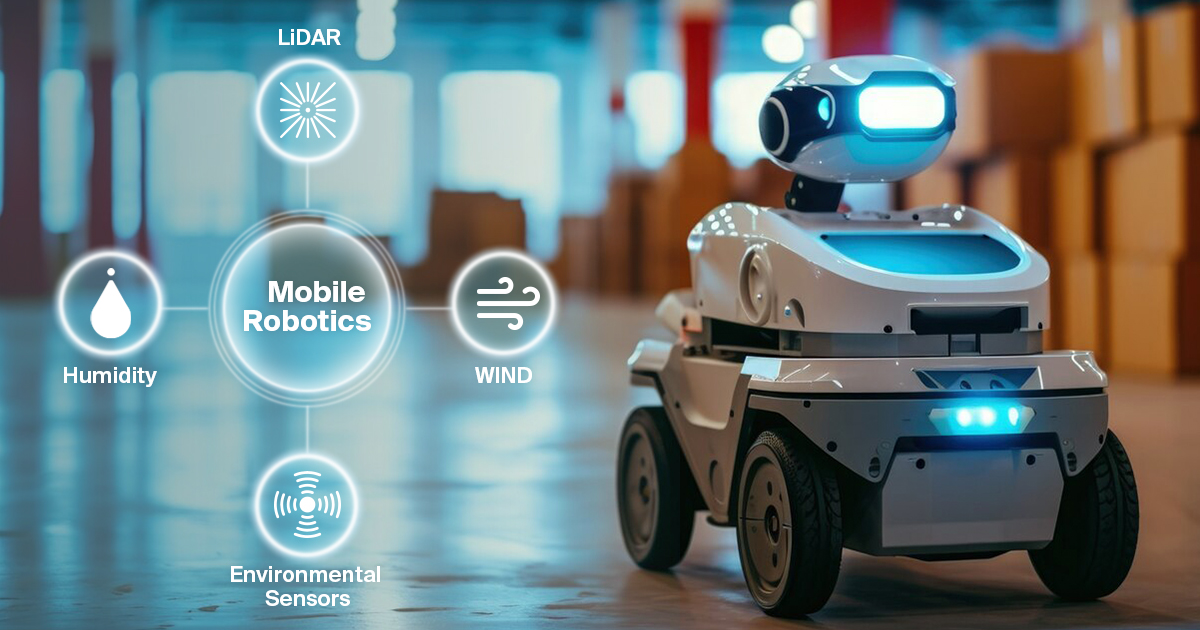- 2.6Impact Factor
- 6.1CiteScore
- 17 daysTime to First Decision
Advances in Environmental Sensing and Control for Mobile Robotics: Methods, Technologies, and Applications
This special issue belongs to the section “Industrial Electronics“.
Special Issue Information
Dear Colleagues,
This Special Issue focuses on the impact of environmental factors on the performance and control of mobile robotic systems. As mobile robots are increasingly used in dynamic and unstructured environments, accurately sensing and responding to environmental conditions like temperature, humidity, wind, and obstacle characteristics is critical for reliable operation. This collection emphasizes advanced sensor technologies, adaptive control mechanisms, and machine learning approaches that improve sensor accuracy and system performance in such challenging environments.
The scope of this Special Issue covers innovations in environmental sensing, the development of models to account for environmental influences on sensor data, and the integration of IoT and AI to enhance environmental awareness in mobile robotics. It welcomes contributions on both hardware and software solutions, experimental studies, and real-world applications across various industries including agriculture, healthcare, autonomous vehicles, and disaster response.
The purpose of this Special Issue is to bridge the knowledge gap by presenting novel research on how environmental factors affect robotic sensors and systems. It aims to push the boundaries of sensor calibration, environmental modeling, and adaptive control, offering solutions that supplement the existing literature. This collection will provide fresh insights into overcoming environmental challenges, thus supporting the next generation of mobile robotic systems that operate effectively in unpredictable environments.
Dr. Serhii Baraban
Prof. Dr. Andriy Semenov
Guest Editors
Manuscript Submission Information
Manuscripts should be submitted online at www.mdpi.com by registering and logging in to this website. Once you are registered, click here to go to the submission form. Manuscripts can be submitted until the deadline. All submissions that pass pre-check are peer-reviewed. Accepted papers will be published continuously in the journal (as soon as accepted) and will be listed together on the special issue website. Research articles, review articles as well as short communications are invited. For planned papers, a title and short abstract (about 250 words) can be sent to the Editorial Office for assessment.
Submitted manuscripts should not have been published previously, nor be under consideration for publication elsewhere (except conference proceedings papers). All manuscripts are thoroughly refereed through a single-blind peer-review process. A guide for authors and other relevant information for submission of manuscripts is available on the Instructions for Authors page. Electronics is an international peer-reviewed open access semimonthly journal published by MDPI.
Please visit the Instructions for Authors page before submitting a manuscript. The Article Processing Charge (APC) for publication in this open access journal is 2400 CHF (Swiss Francs). Submitted papers should be well formatted and use good English. Authors may use MDPI's English editing service prior to publication or during author revisions.
Keywords
- mobile robotics
- environmental sensors
- ultrasonic rangefinders
- technical vision systems
- sensor accuracy
- atmospheric conditions
- machine learning in robotics
- sensor calibration
- obstacle detection
- neural networks in robotics

Benefits of Publishing in a Special Issue
- Ease of navigation: Grouping papers by topic helps scholars navigate broad scope journals more efficiently.
- Greater discoverability: Special Issues support the reach and impact of scientific research. Articles in Special Issues are more discoverable and cited more frequently.
- Expansion of research network: Special Issues facilitate connections among authors, fostering scientific collaborations.
- External promotion: Articles in Special Issues are often promoted through the journal's social media, increasing their visibility.
- e-Book format: Special Issues with more than 10 articles can be published as dedicated e-books, ensuring wide and rapid dissemination.

